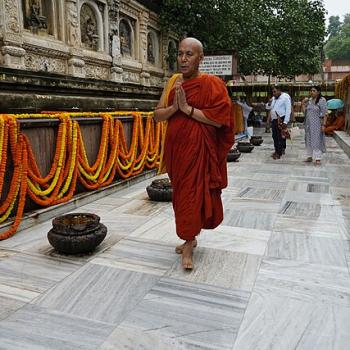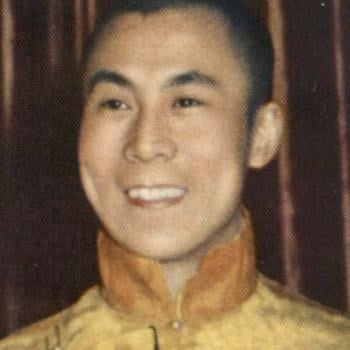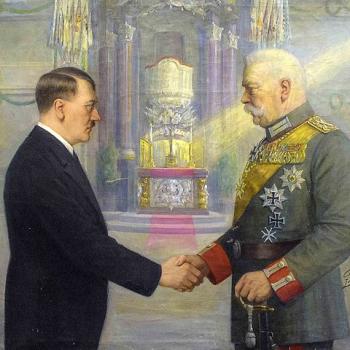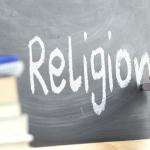Religion in public schools has been a hot topic in the U.S. for decades. It might surprise you to learn that many of the lawsuits challenging religion in American public schools have been filed by religious people. Yes, there are religious people who want less religion in public schools, not more. If you assumed otherwise, please keep reading.
Today, school districts throughout the U.S. are doubling down on introducing religion into public schools. For example, last year the Texas State Board of Education approved a curriculum that includes lessons based on Bible stories. Oklahoma’s state superintendent of public education has required incorporating the Bible into the curriculum as “instructional support.” Louisiana has mandated posting the Ten Commandments in all classrooms. The Louisiana law is nearly identical to a Kentucky law that was declared unconstitutional in 1980, but the state legislators hope the current Supreme Court will see things differently. And it might.
Many of the court challenges to these laws are being joined by Christian ministers and Jewish rabbis. For example, the Louisiana Ten Commandments law mandates the wording of the Ten Commandments that must be posted. Some clergy object to that wording and don’t want it taught to children of their faith tradition. They also aren’t keen on the government — in the form of public school employees — getting involved in religious instruction, period.
Many of the historic Supreme Court rulings that found religious observances in public schools unconstitutional originated with suits brought by religious people. Several of the plaintiffs in Engel v. Vitale (1963) were Jews who objected to a prayer the state of New York mandated for public school classrooms. The suit in Abington School District v. Schempp (1963) was filed by a family of Unitarians when their high school son was reprimanded for quietly looking through a Quran in class instead of attending to the required King James Bible verses. Atheists have brought challenges against religion in public schools also, but more often than not the plaintiffs in the well-known, landmark cases have been religious.
Religion in Public School: Overview
It’s important to understand that courts’ rulings against religion in public school were not opposed to religious expression, including prayers, by public school students. Free expression of religion requires that religious expression must be freely initiated by the students, not teachers or school administration. And it’s important that students must not feel coerced into participating. Students may pray together on public school property before and after school and during recess. They may bring Bibles to school and use school facilities for after-school Bible study clubs, if the school is allowing other kinds of clubs, such as the Girl Scouts, to meet there. This is a matter of law, enacted by Congress in the Equal Access Law of 1984, which was upheld by the Supreme Court in Westside Community Schools v. Mergens (1990).
What usually got schools into trouble in the past is that school officials decided what prayers all students should say or what scriptures all students should read. As much as many Protestants might love the King James Bible, Catholicism considers the King James to be a “Protestant” Bible and prefers its own version. Plus there are Jewish, Muslim, Hindu, Buddhist, Sikh, and children from many other faith traditions attending U.S. public schools. But even in schools districts that are nearly entirely Christian, introducing religious instruction can create ugly sectarian conflicts.
Religion in the Public School District
As an example, let’s look at another landmark case, Santa Fe Independent School Dist. v. Doe (2000). I discussed this in an earlier post, “Faith and Football: What’s the Deal With Prayers Before Games?” Here I want to add some more detail.
The Santa Fe Independent School District is a rural district in Texas. The residents are predominantly Baptist. Back in the early 1990s two mothers filed suit against the school district, alleging religious discrimination against their children. One family was Catholic, the other Mormon. What sort of discrimination? School officials actively promoted attendance at Baptist revival meetings and pushed children to join Baptist-oriented religious clubs in school, the plaintiffs said. Gideon Bibles were distributed to students in the school. Further, some of the teachers had chastised the non-Baptist students for their minority religious status. The plaintiffs also objected to the prayers offered at graduation ceremonies and before football games, which they said were overly sectarian.
A Hostile School Environment
If the plaintiff’s allegations don’t sound that bad to you, I recommend an article from the November 2000 issue of Texas Monthly magazine. In “They Haven’t Got a Prayer,” writer Pamela Colloff described what was going on in greater detail. Students who declined to accept the Gideon Bibles became subject to ostracism and bullying by other students. A seventh-grade teacher handed out fliers in class about an upcoming Baptist revival and then spent ten minutes of class time denigrating a Mormon student’s religion as a cult. There was one Jewish student in the district. Other students amused themselves by drawing swastikas on his notebook, giving him the Heil Hitler salute, and ultimately threatening to hang him. When the school did absolutely nothing to stop the harassment, his parents filed a separate suit.
The school district hadn’t always been a petri dish for sectarian divisiveness. But things changed in the early 1990s when a coalition of local ministers began to aggressively push for prayer in school. Soon most of the seats on the school board were filled by people who thought it their life’s calling to bring children to Jesus. Proselytizing in school became common, and so did harassment of children from minority (in that school) faiths. If any of the students were atheists, they were keeping that in the closet. Soon the prayers offered at football games and other school events were of such a sectarian nature that a Catholic parent objected to them at a public meeting. Someone else at the meeting yelled “Catholics aren’t Christians anyway.”
Reactions to the Lawsuit
When the initial lawsuit in Santa Fe Independent School Dist. v. Doe was filed in a U.S. District Court, the plaintiffs were listed as “Doe” to protect their safety. Even so, the community was soon obsessed with discovering their identities. Petitions to support the school district were circulated. “Anyone who didn’t sign them went down on the town’s McCarthy list,” said the Does’ attorney. Children were grilled by parents and other adults to reveal who they thought might be the “Doe” children, “so they can be saved.” It got so bad that another U.S. District judge threatened the local inquisitors with “the harshest possible contempt sanctions” and “criminal liability” if they did not cease their investigations.
A woman named Debbie Mason was outspoken in her support of the Does. Soon she was being shunned by long-time friends. People would turn their backs to her in the grocery store. Then her husband lost his job. Threatening phone calls came late at night. “I was called a lesbian, a Communist, an atheist—everything you can imagine,” Debbie Mason said.
One afternoon she found her daughter Tiffany throwing her Bibles and her collection of cross-shaped earrings in the trash. She was distraught over school bullying of her Mormon friend. “If this is what Christianity is about,” Tiffany said in tears, “I don’t want any part of it.”
Lower Court Decisions
In May 1995, a District Court issued an interim order addressing several issues. The prayer at the upcoming graduation had to be “non-denominational” and prepared by the students, without input or pre-approval by school administration. The prayers could name religious figures, such as Mohammed, Jesus, Buddha, or the like as long as the general thrust of the prayer is non-proselytizing,” the order said. I’m sure the judge meant well, but he was asking for a level of critical discernment rare in adults, never mind teenagers.
The school district then held two secret ballot elections. First, the students were asked to vote on whether they wanted prayers at graduation and before football games. And then they voted to choose which student would compose and deliver the prayer. School officials were not to be involved; the prayers were to be entirely the chosen student’s project. In this way, the student’s prayers would be a “free speech” issue, not “church-state” issue, since the school itself did not dictate the content of prayers. The Does’ ACLU attorney saw this as a “slippery slope” argument. “If a student vote could privatize prayer,” he said, “then students could vote for prayer in the classroom, and public schools could evade every one of the Supreme Court’s school prayer cases.”
So this was not the end of the court struggle. Eventually, the school prayer case moved on to the U.S. Court of Appeals of the Fifth Circuit. That court decided that while a prayer offered at a graduation ceremony was acceptable, it struck down the practice of over-the-loudspeaker prayers before football games, even if the prayer was written by a student. And that was the sole question taken to the U.S. Supreme Court — “Whether petitioner’s policy permitting student-led, student-initiated prayer at football games violates the Establishment Clause.”
At the U.S. Supreme Court
The school district’s lawyers argued that stopping a student from reading a prayer before a high school football game was a free speech issue. The Does were asking for censorship of religious speech at a public forum, the district’s lawyers said. But in the majority opinion, Justice John Paul Stevens said,
The District argues unpersuasively that these principles are inapplicable because the policy’s messages are private student speech, not public speech. The delivery of a message such as the invocation here–on school property, at school-sponsored events, over the school’s public address system, by a speaker representing the student body, under the supervision of school faculty, and pursuant to a school policy that explicitly and implicitly encourages public prayer–is not properly characterized as “private” speech.
Further, “The majoritarian process implemented by the District guarantees, by definition, that minority candidates will never prevail and that their views will be effectively silenced,” Justice Stevens wrote. And the school district could not persuasively argue that there was no coercion involved in the prayer, since attendance at games is mandatory for some students — players, cheerleaders, the marching band. The pregame prayer “has the improper effect of coercing those present to participate in an act of religious worship.”
The Court ruled that the pregame prayers are unconstitutional. Justice Stevens was joined by Justices O’Connor, Kennedy, Souter, Ginsburg, and Breyer. Court-watchers will recognize that all of these justices are either retired or deceased. A dissent was filed by the late Chief Justice William Rehnquist and joined by Justice Antonin Scalia, also deceased, and Justice Clarence Thomas, who still sits on the court. Whether the current court would have come to the same conclusion as Justice Stevens is hard to say.
Religion in Public School: Who Is Oppressing Whom?
Going back to Pamela Colloff’s reporting for Texas Monthly, it’s striking to me that the pro-religiosity group could not fathom why anyone would object to prayers and proselytizing in public schools. They were certain those on the other side hated God, possibly worshiped the Devil, and wanted to outlaw prayer everywhere. And much of this criticism was coming from some of the community’s clergy, who relentlessly engaged in bearing false witness against the Does. They could not see the harm they themselves were causing.
As one daughter from a Doe family — who was still anonymous in the article — said, “Our intention was just the opposite: We wanted to guarantee religious freedom for every student by keeping religion out of the hands of government. We were fighting for religious freedom, not against it. But people in Santa Fe couldn’t understand that.”
Finally, if saying a group prayer before watching a high school football game is so all-fired important to you, organize a pre-game meetup near the bleachers with like-minded folks and pray all you want. As long as you aren’t interfering with anyone else, or coercing people to join who don’t want to, I doubt a court anywhere in the U.S. would deny you that privilege. Helpful hint: No megaphones, please. God will hear you just fine without them.












